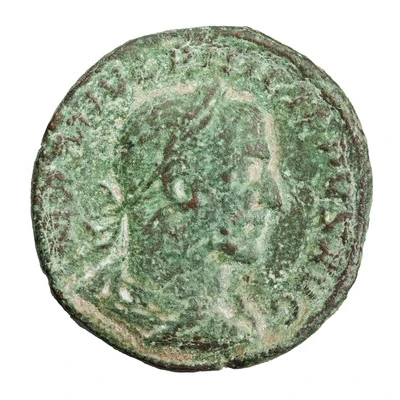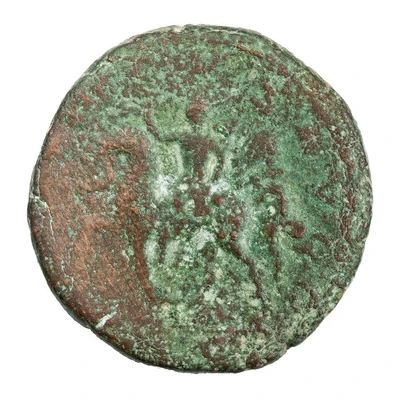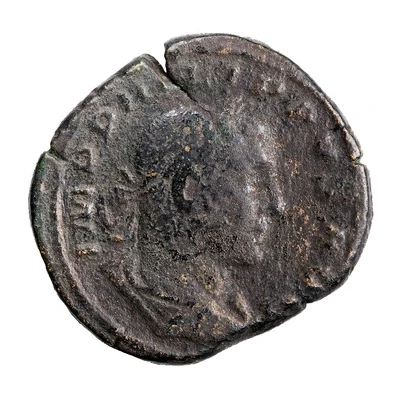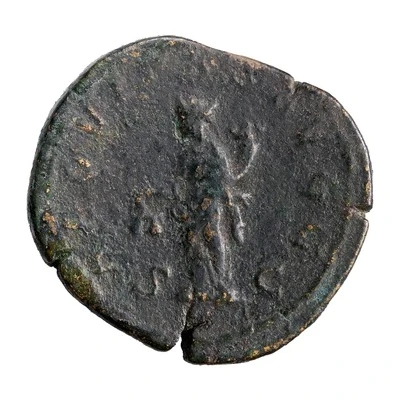
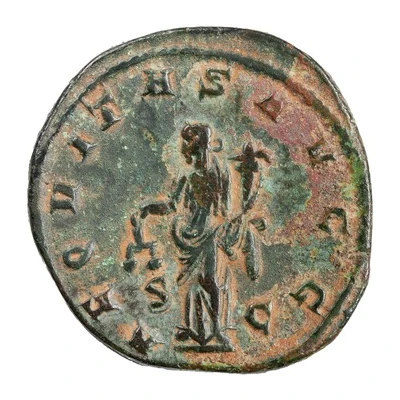

© American Numismatic Society (ANS)
Sestertius - Philippus I AEQVITAS AVGG S C; Aequitas
| Bronze | 18.5 g | 30 mm |
| Issuer | Rome › Roman Empire (27 BC - 395 AD) |
|---|---|
| Emperor | Philip I (Marcus Iulius Philippus) (244-249) |
| Type | Standard circulation coin |
| Years | 244-249 |
| Value | Sestertius (⅛) |
| Currency | Antoninianus, Reform of Caracalla (AD 215 – 301) |
| Composition | Bronze |
| Weight | 18.5 g |
| Diameter | 30 mm |
| Shape | Round (irregular) |
| Technique | Hammered |
| Demonetized | Yes |
| Updated | 2024-10-05 |
| Numista | N#282286 |
|---|---|
| Rarity index | 90% |
Reverse
Aequitas, draped, standing left, holding scales in right hand and cornucopiae in left hand.
Script: Latin
Lettering: AEQVITAS AVGG S C
Translation:
Aequitas Duorum Augustorum. Senatus Consultum.
Equity of the two emperors. Decree of the senate.
Comment
Mass varies: 13.113–23.75 g;Diameter varies: 27.85–35 mm;
Example of this type:
American Numismatic Society (ANS)
Source:
Online Coins of the Roman Empire (OCRE)
Interesting fact
The Sestertius coin features an image of Philippus I, also known as Philip the Arab, who was a Roman Emperor from 244 to 249 AD. The coin's design includes the inscription "AEQVITAS AVGG S C," which stands for "Aequitas Augustorum," meaning "the equality of the emperors." This inscription was used to promote the idea that the Roman Empire was ruled by multiple emperors who shared equal power and authority. Additionally, the coin's reverse side features a personification of Aequitas, the Roman goddess of equality and fairness, who is depicted standing and holding a scale, symbolizing the idea of balance and justice. This design was meant to reinforce the message of equality and fairness in the Roman Empire. Overall, this coin is an interesting example of how the Roman Empire used currency as a tool for promoting their values and ideals, and it provides a glimpse into the political and social climate of the time.
